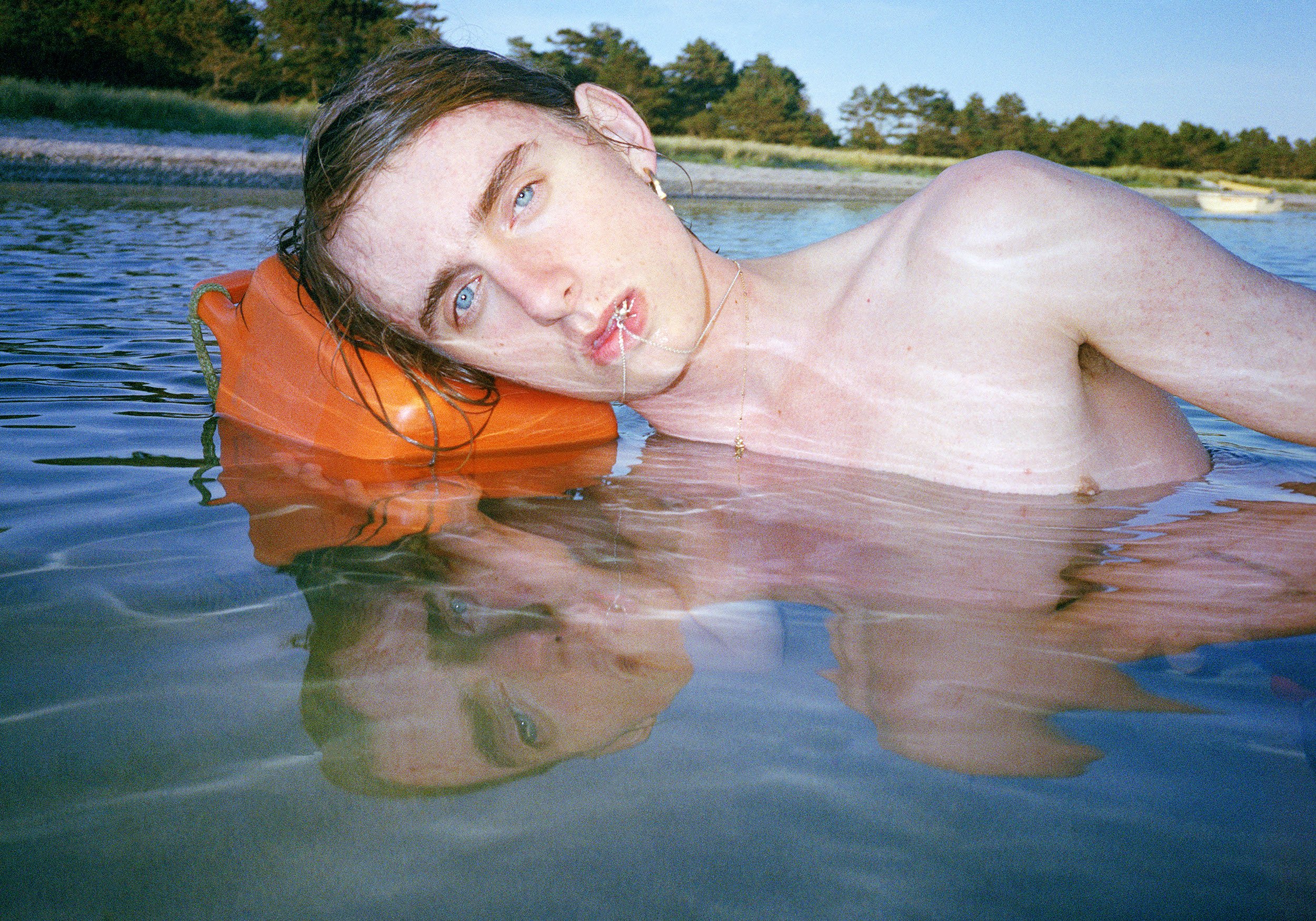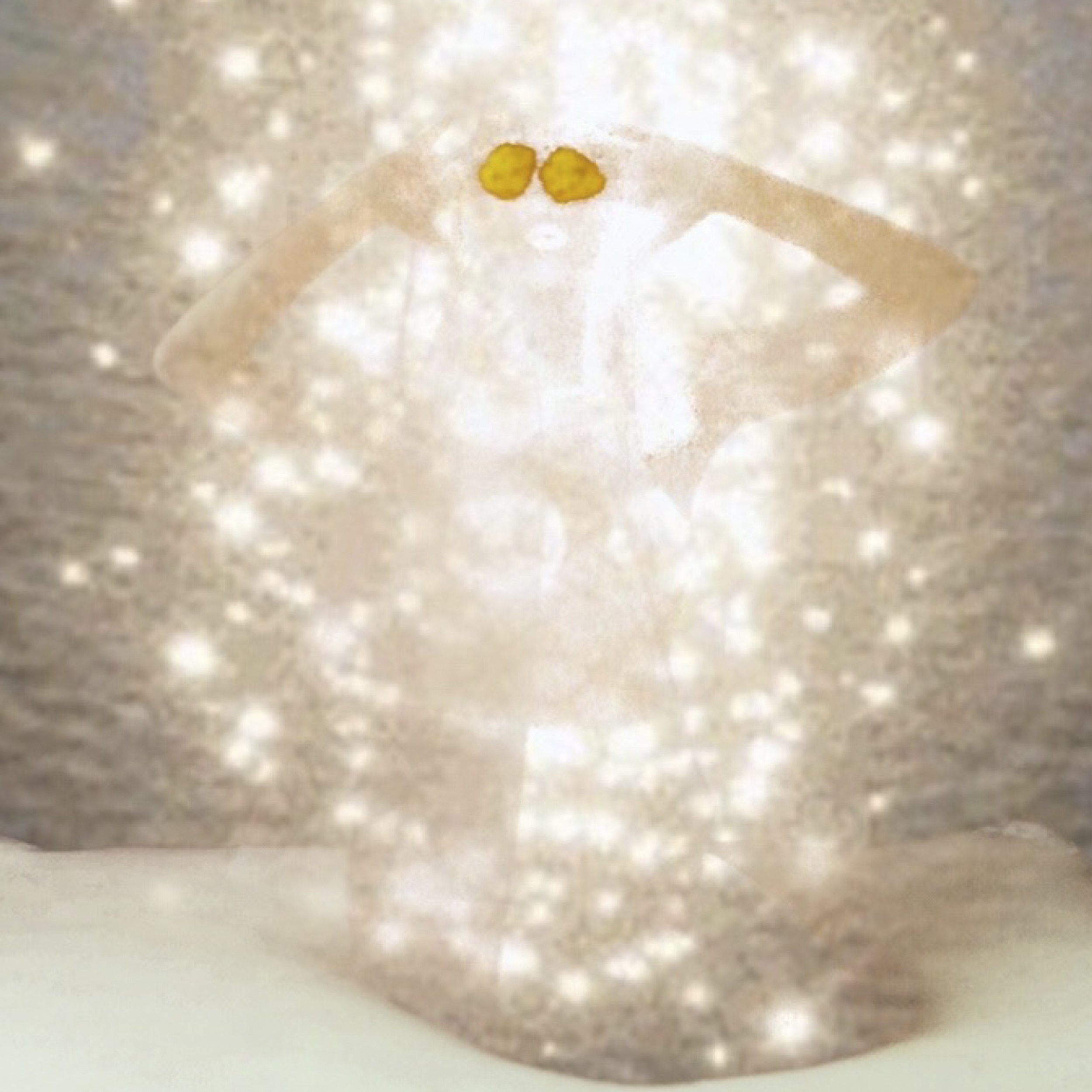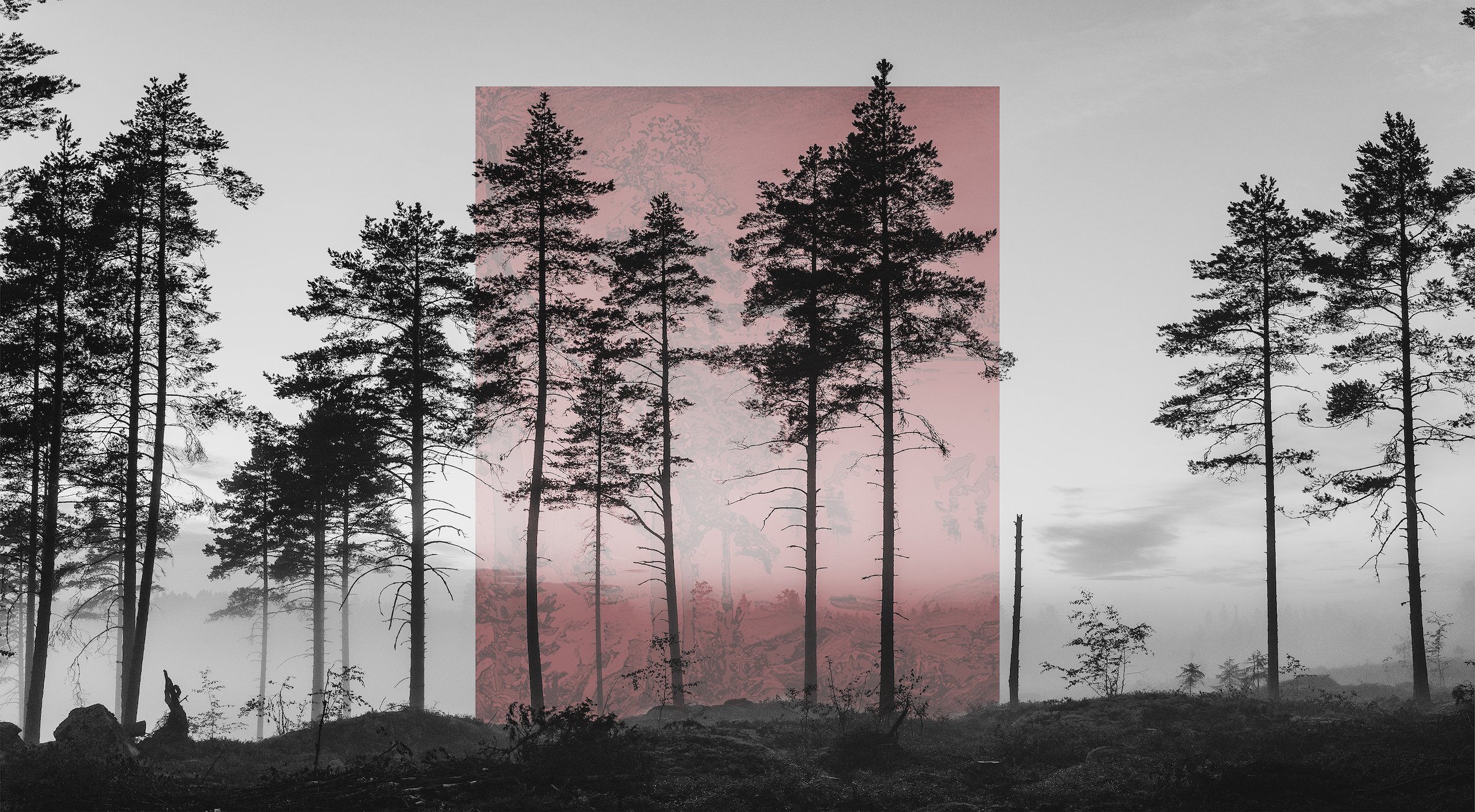focus on nordic photography
Text by Marie Wengler
Over the past few decades, Nordic Photography has gained prominence on the global art scene. Though often regarded synonymous with the capturing of the peculiar interplay of northern light and landscapes through a documentary aesthetic, it has evolved far beyond this picturesque stereotype.
Today, Nordic Photography transcends a homogeneous aesthetic, encompassing an eclectic mix of lens-based voices from across the Nordics. An examination of the ever-evolving photographic scenes within each Nordic country unveils a heterogeneous spectrum of visual styles. These styles span from spontaneous snapshot aesthetics and (post-)documentary deadpans to commercially-inspired imagery and meticulously staged tableaus. Forget about Nordic Photography; it is time to talk about Nordic Photographies.
However, weaving through these diverse visual voices is a common thread: the tendency for the photographers to turn their focus (or lens, if you will) either towards themselves or their (immediate) surroundings as a means for making a social commentary on the intricate dynamics of power, knowledge, and identity. This tendency, I suggest, is the echo of the postmodern turn in the 1980s that introduced poststructuralist perspectives to the Nordic region (Sandbye, 2012) – an echo, that reverberates in the works of the ten Nordic contemporary photographers explored in this see-zeen feature.
Take, for instance, Fryd Frydendahl, who in Salad Days makes an intimate exploration of identity construction in relation to friendships, family and intimate partners. Occupying an aesthetic space that straddles documentary and commercial photography, Fryd masterfully crafts an ambience of connectivity and vulnerability within carefully staged scenes. Through this, Fryd invites us to relate to the depicted persons through our own lived experiences. Predominantly featuring individuals in their youth, in the formative years we all go through, Fryd prompts us to revisit the fragile liminal period between childhood and adulthood: the time when we still looked at life through a carefree, innocent and curious gaze, just before cynicism and worries start taking a hold on our bodies.
©fryd frydendahl
In a similar aesthetic vein, Matilde Søes Rasmussen captures private moments that leave a lasting impression on the viewer. In her series Unprofessional, Matilde draws upon personal experiences as a model travelling in Asia, scrutinising how the interplay between power structures, beauty ideals, and the objectification of women's bodies in Western society influence her self-perception as a young woman. Employing a performative and autobiographical approach to photography, she shows us how society renders the female body a commodity. Her dramatic makeup draws us into her photographs. Her naked body evokes feelings of vulnerability while simultaneously making us painfully aware of (the direction of) our gaze: our normalised, commodifying way of looking at the (young) female body.
©matilde søes rasmussen
Also Berglind Rögnvaldsdóttir finds inspiration in her own lived experiences and uses her body as material to address the societal narratives we (re)produce about women. However, unlike Mathilde, she pursues a different aesthetic approach. In Grýla, Berglind revisits and revives Iceland's first feminist. Through a psychedelic collage of Icelandic landscapes and elements from the female body, she rewrites the poems and stories of Grýla. Departing from the conventional portrayal of Grýla as a malicious figure who mistreats men and consumes misbehaving children, Berglind venerates her feminine strength instead. A nipple merges with a rocky landscape. An eye emerges through a cave formation. Another world lurks in the depths of a navel. In Berglind’s surreal universe, Grýla and nature coalesce. The feminine strength embodied by Grýla flows through the Icelandic landscape, defining the contours of mountains and the twist of rivers.
©berglind rögnvaldsdottir
Yet another example of a contemporary Nordic photographer who makes a societal commentary by turning their view towards personal experiences, using their own body, is Paulina Tamara. In Untitled, Paulina explores the interconnection between memory and loss. Allowing themselves to be carried and embraced, naked and vulnerable, by an edited-out figure, Paulina not only revisits their own experiences with loss but also speaks to an inherent longing for connection and closeness that we all share. The repetition and simplicity in the staging of the series direct our gaze to Paulina's body and its relationship to the erased figure. As Paulina's face remains unseen, their body becomes iconic rather than a personal marker. This invites us, as viewers, to assume Paulina’s place, thereby connecting with our own longing for a person effaced from our lives.
©paulina tamara
In her series I'm not here, Lise Johansson likewise turns away from us, leaving her character unexplained. As viewers, we are asked to make meaning from the situations with which we encounter her: to make dynamic connections between the empty spaces and the anonymised character she embodies. The dreamlike compositions from an abandoned hospital, complemented by a subdued colour palette, evoke an uncanniness, an unreal reality, reminiscent of the minds of those hospitalised. Through this intentional aesthetic choice, Lise makes a subtle commentary on the topic of mental health issues in present-day society. The series serves as a metaphorical portrayal of the solitude and confinement experienced by individuals silently grappling with mental health challenges in our community.
©lise johansson
Like Lise, Essi Maaria Orpana also engages with vacant spaces in her series Such Is the Silence. Contrary to Lise's liminal aesthetics, however, we meet Essi in abandoned houses that bear traces of lived lives. Much like Lise, Essi meticulously stages her photographs while performing in front of the camera. Like a ghost floating silently through the houses where forgotten memories reside in the wallpaper, echo in faded family photos, and manifest in mirror reflections, Essi, akin to Lise, creates an unreal reality, a sense of unfamiliar familiarity, that prompts us, the viewers, to connect with our own faded (family) stories.
©essi maaria orpana
The subject of family reappears in Elsa Gregersdotter’s series I look at this tree and think of myself. Through capturing photographs of her immediate surroundings – her family, and objects and places associated with her family – she deconstructs the conventional family portrait. Utilising a blend of black/white, inversion, and color photographs, of people and places bearing the imprints of human existence, and of bodies in various more or less active or passive positions, Elsa dismantles the idea of the perfect family. She takes a curious and critical look on the roles we assume within our family dynamics, both towards each other and ourselves. She strips away our masks, showing us exactly as we all are: quirky and lonely beings. And because the portrayed persons, in a similar vein to what we saw in Lise’s and Paulina’s work, are anonymised icons, we, as viewers, are invited to take off and look at the masks we wear in our own familial relationships.
©elsa gregersdotter
Echoing Elsa, Inka & Niclas Lindergård also deconstruct the conventional family portrait. Like Matilde, Berglind, Paulina, Lise and Essi, Inka & Niclas also perform in front of the camera in their series Family Portraits, this time not as individuals but as a family adorned in reflective clothing that reflects the flash's light back into the camera lens, resulting in radiant silhouettes that change shape as their family grows. Similar to Paulina's edited-out figure, their use of retroreflective suits erase the family from the compositions. What is left is the contours of glowing anonymous forms against the backdrops of grand Nordic landscape sceneries. It creates an immersive quality that draws us into the photographs. We are, once again, invited to put ourselves in their place: to relate to our own family and the roles we occupy in this family.
Inka & Niclas further complement their two-dimensional photographic works with three-dimensional works that not only rethink photography as a medium, but also comment on our relationship with nature. In addition to challenging the conventional family portrait, Inka & Niclas simultaneously offers a social commentary on the way we relate to, depict (ourselves and our families in) and consume sublime nature scenarios in contemporary society.
©inka & niclas lindergård
In parallel with Inka & Niclas, Jaakko Kahilaniemi also explores his family through the Nordic landscape. In 100 Hectares of Understanding, he turns his camera towards the large forest area he inherited as a young child. While Inka & Niclas focus on the tangible manifestations of their family – its members – Jaakko studies the intangible manifestation of his family: the forest. Treating the trees as if they were his ancestors, he embarks on an experimental exploration of his family's legacy. He weighs stumps of wood, picks pine needles, and arranges sprouts neatly in rows. Reminiscent of Paulina's visible post-editing, Jaakko also transforms his photographs in a way that creates an analytical distance to the forest as a forest. By inserting graphic objects into his photographs, he, like Inka & Niclas, challenges our traditional understanding of what constitutes a photograph. Through such experimentation, Jaakko is able to structure and reconceptualise the forest, thereby rendering intelligible his heritage: by taming the untamed, he is able to familiarise himself with a family legacy that has remained unfamiliar territory to him for years.
©jaakko kahilaniemi
The Nordic landscape also plays a pivotal role in Terje Abusdal's series Slash and Burn. In the series, Terje delves into the phenomenon of the Forest Finns: a minority group in Norway that, in the 1600s, migrated to ‘Finnskogen’ (the Forest of the Finns), a vast forest belt between Sweden and Norway, in search of new land to practice ‘svedjebruk’, commonly known as slash-and-burn farming: an ancient agricultural technique that originated in Russia but became widespread throughout Scandinavia during the Medieval period. This method involves cutting and burning down forest areas, with the ashes enriching the soil for crop cultivation. However, it also necessitates a nomadic lifestyle, continuously seeking new land.
©terje abusdal
Four centuries later, the Forest Finns still exist. Although their language has died out, the mythology of the land and its people persists. This mythology is influenced by an Eastern shamanistic tradition tied to magic and mystery – and it is precisely this spiritual quality that Terje seamlessly integrates into his otherwise documentary aesthetic. There is a supernatural allure to his photographs. The boundaries of what is real and what is not seem blurred. Terje achieves this magical realism through various experiments, notably post-production burning of photographs. It allows him to revisit the traces of the past in a contemporary context, offering a social commentary on the relevance of the story of the Forest Finns to present-day individuals and society. As Slash and Burn explores what it means to be a Forest Finn today – an identity reduced, among descendants, to a state of mind – the series, simultaneously, examines what it means to assimilate into a majority culture as a minority group, and the implications of such assimilation on one's identity and sense of belonging – a pertinent inquiry amidst the contemporary rise of populist nationalism. As the final example in this feature, Terje, akin to his fellow artists, therefore once again directs his gaze (or camera, if you will) towards the intricate interplay of power, knowledge, and identity in contemporary society. The echo of the postmodern turn continues to resonate.
References: Filter #6: Nordic Now! "Nordic Art Photography” by Mette Sandby
About the author:
Marie Wengler is located in Copenhagen, Denmark. Simultaneously a social scientist (PhD) and a contemporary art photographer, she works at the intersection between art-based research and research-based art, exploring and exposing the limits of what we perceive as “normality” in society. In 2022, she was selected as one of 30 under 30 women photographers to watch (Artpil), was shortlisted for The IWPA Award and The BJP Award, and was one of the winners of YP2022 at Kiyosato Museum of Photographic Arts (KMoPA). Last year, she participated in group exhibitions in NYC, Tokyo, and Paris, and was nominated for and featured in Prix Pictet’s 2023 Publication by The V&A Museum. Most recently, she was longlisted for The Aesthetica Art Prize 2024.
Marie also co-founded a new Nordic network for womxn lens-based artists that will launch officially on March 8th, 2024. More details will be shared soon. Stay tuned by checking Marie’s Instagram [@mariewengler] in February.
You can also see Marie’s work in see-zeen issue #4 and in A Visual Dialogue issue #5
Terje Abusdal - Norway
Website
Instagram
News:
Book release of Costa Bravo Holiday Paradise, published with Journal in 2024.
Fryd Frydendahl- Denmark
Website
Instagram
News:
Conversation with Allen Frame at Baxter Street, The Camera Club of New York regarding the book Salad Days in New York
February 15, 2024, 6pm EST
Stage design for the play Dagene, Dagene, Dagene at Teater Revolver in Copenhagen, Denmark.
premiering April 18, 2024
Elsa Gregersdotter - Sweden
Website
Instagram
Inka and Niclas - Finland/Sweden
Website
Instagram
News:
Upcoming exhibitions:
Human / Nature, Fotografiska New York, USA,
Feb 9 - May 24, 2024
Second Nature: Art in the Age of the Anthropocene, Nasher Museum of Art Duke University, North Carolina, USA,
Aug 29, 2024 – Jan 5, 2025
Solo exhibition, Haus Am Kleistpark, Berlin, Germany
Oct 17- Dec 15, 2024
Lise Johansson - Denmark
Website
Instagram
News:
Exhibiting at Zonamaco Art Fair, Mexico in the beginning of February. Represented by In The Gallery, Copenhagen.
Book release to be announced soon.
Jaakko Kahilaniemi - Finland
Website
Instagram
News:
Exhibition:
The Horizon, Lapua Art Museum in Lapua, Finland
February -May 2024,
Essi Maaria Orpana - Finland
Website
Instagram
Berglind Rögnvaldsdottir - Iceland
Website
Instagram
News:
Upcoming exhibition in Reykjavik in September 2024
Matilde Søes Rasmussen - Denmark/Sweden
Website
Instagram
News:
Upcoming exhibitions:
Jahresausstellung HFBK University of Fine Arts Hamburg Hamburg, Germany / group show
Feb 8 - Feb 11, 2024
Inspiration, Oblong in Copenhagen, Denmark / solo show
May 9 - June 6, 2024
Book release in early 2025
































































































































